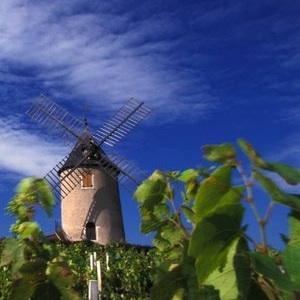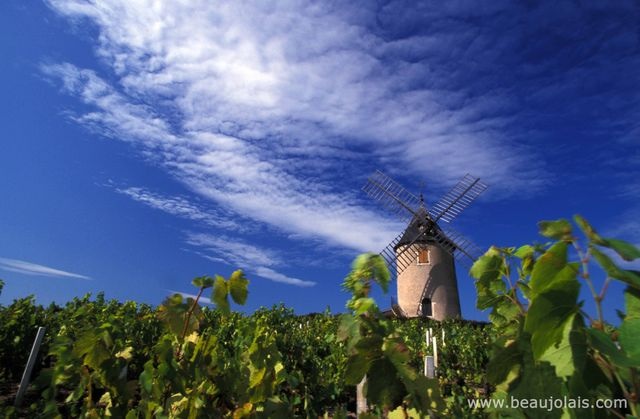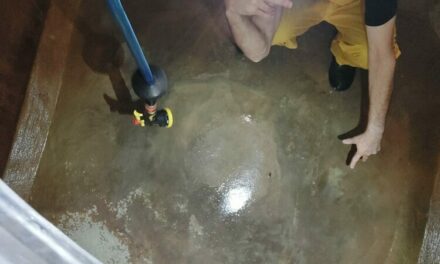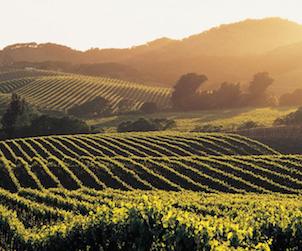Beaujolais wines from France typically conjure up memories of Beaujolais Nouveau, that cheap and cheerful red wine made from Gamay grapes, released with great fanfare the third Thursday of every November. Beaujolais Nouveau is a quaffing wine because it lacks the tannins normally found in red wines. This is done intentionally through the process of carbonic maceration, which ferments the juice inside the grapes, minimizing the skin contact. The result is a fruity wine with low tannins that is best served chilled and consumed six to eight weeks after harvest — far faster than most red wines. While the marketing concept behind Beaujolais Nouveau was brilliant from a sales standpoint, it overshadowed the more sophisticated, age worthy wines of Beaujolais. Producers want to change this image and that was the message conveyed by Anthony Collet, Head of Marketing and Communication for Inter Beaujolais at a seminar and tasting at Toronto’s Ritz Carlton earlier this year.
Technically, Beaujolais is considered part of France’s Burgundy region, extending over 35 miles at its southern end. Its picturesque landscape is dotted with over 150 castles and some of the steepest vineyards in France. Over 2,000 wineries produce wine from 18,000 hectares of vines planted at 200-400 metres — on slopes of mountains that have twice that elevation. This altitude results in a semi-Continental climate, with cold winters, mild springs and warm summers and autumns.
Like Burgundy, Beaujolais does not blend and shares the same white grape (Chardonnay), but not the same red varietal. Gamay, rather than the Pinot Noir grape found in Burgundy, is the red and main varietal of Beaujolais. In fact, Beaujolais is home to half of the world’s Gamay production. The fact that an older Gamay can be confused with Pinot Noir is understandable, since Gamay is actually a cross between Gouais Blanc and Pinot Noir. Gamay vinification in Beaujolais requires hand picking of whole bunches, which are then placed in vats without crushing. Naturally high in acidity but lacking in tannins (because Gamay is a thin skinned grape) stems may be added for additional structure.
Collet stressed that the Beaujolais region produces only wines at the AOP level (the top tier of the French wine classification system) in three appellations – Beaujolais AOP, Beaujolais Villages AOP and Cru Beaujolais. The southeastern Beaujolais AOP appellation accounts for 40% of Beaujolais’ vineyards, with 72 villages producing red, white and rose wines. Roughly half of this is Beaujolais Nouveau AOP wines (red and rose only). The Beaujolais Villages AOP appellation surrounds the 10 Crus of Beaujolais at the north end. Thirty eight communes may use this appellation, making wines from both Gamay and Chardonnay grapes. Roughly one quarter of the wines are sold as Beaujolais Villages Nouveau reds and roses. The red wines of Beaujolais Villages show aromas of dark and red fruits and can be consumed young or aged a few years.
The 10 Crus of Beaujolais are the flagship wines of the region, which produce only red Gamay-based wines from vineyards grown at 200-500 metres on granitic soils. Complex and structured, they have the longest cellaring potential of the wines of Beaujolais and can be aged for decades. The 10 Crus fall into three groupings – soft, light and fruity (Brouilly, Chiroubles and Regnie), aromatic, round and full bodied (Cote de Brouilly, Fleurie, Julienas and Saint-Amour) and powerful, intense, structured with great ageing potential (Chenas, Morgon and Moulin-a-Vent). The tasting highlighted these Crus and the differences between their three styles:
Brouilly, Chateau de la Pierre 2011 ($17.95; 12.5%; Select Wines) comes from the most southerly of the Crus. Here vines are planted on steep, well exposed vineyards around the foot of Mont Brouilly on granite and alluvial soils. Gamay grapes for this wine were grown on six hectares of vineyards and vinified in stainless steel. Round, lush and fruit-driven, it offers red and black fruit aromas with a hint of spice, good structure and moderate tannins. ![]()
Regnie, Jean-Michel Dupre Vignes de 1918 2011 ($17.95; 12.5%; Hexagon Wines) is from the youngest of the Crus, which only received its AOP status in 1988. The fact that this example is somewhat more structured than the norm for this Cru (which typically produces supple, approachable wines) is explained by the age of the vines, which were planted in 1918. Their age and longer maceration translates into a more complex, concentrated palate of lush red fruit in the long finish. ![]()
Fleurie, Chateau du Chatelard Cuvee Les Vieux Granits 2011 ($20.95; 13.0%; Signature Wines and Spirits) is from the Cru that produces the most feminine Beaujolais wines. Delicate and harmonious, it displays highly aromatic peach, currants and red fruit notes. Made with Gamay grapes from 75-year old vines that were macerated for 12-16 days, this wine is soft and elegant with good structure. It delivers strawberry, cherry cola and ripe raspberry flavours, with mushroom nuances and the minerality characteristic of Fleurie wines. ![]()
Julienas, Domaine Pascal Aufranc Les Cerisiers 2011 ($17.95; 12.0%; Hobbs & Co) comes from a Cru that produces powerful and harmonious wines with intense peach, red fruit and floral characteristics. The soil type is schist and granite, with seams of clay. This example, from an environmentally friendly producer, was made with Gamay grapes from 65+ year old vines that underwent over 15 days of carbonic maceration. It is named after the old cherry trees (Les Cerisiers) that give it its distinctive stone fruit, cherry and kirsch character. Subtle barnyard and spice nuances round out the finish. ![]()
Saint-Amour, Douce Folie Collin Bourisset 2011 ($16.75; 13.0%; Connoisseur Wine and Spirits) is from siliceous clay soils in the most northerly Cru, which produces lovely, refined and well balanced wines with distinctive wild flower aromas. The Gamay grapes for this wine underwent 10-12 days of carbonic maceration. Soft and round, this perfumed wine offers red fruit characters of cherry, plum and raspberry, with good structure. ![]()
Morgon, Louis Jadot Chateau des Jacques 2009 ($24.95; 13.0%; Halpern Enterprises) is from the Morgon Cru whose unique terroir (loose, crumbling granitic schist) produces fleshy, aromatic wines that are quite ageable. The dark fruit in this Morgon example is highly aromatic and verging on jammy-like, with spicy notes of vanilla, anise and white pepper combined with tobacco pouch nuances. The oak influences are quite prominent in this wine. ![]()
Moulin-a-Vent, Henry Fessy 2010 ($18.50; 13.0%; Mark Anthony Group) is from the most regal of the 10 Crus, named after the distinctive windmill guarding the vineyard. With its manganese-rich granitic soil, it makes some of the most structured and aromatic wines of the Beaujolais Crus that will cellar extremely well. The 2.5 hectare vineyard for this wine, with its 50-year old vines, was bought by Maison Louis Latour in 2008. Highly perfumed with great structure, this wine is packed with red fruit flavours with subtle accents of spice. ![]()
All Scores out of five apples.
 Margot Ritchie is a Toronto-based journalist, whose articles focus on wine and culinary trends. A member of the Wine Writers’ Circle since 1997, she has travelled throughout many of the major wine growing regions of Europe and North America. These include Austria, France, Italy, and Portugal, as well as California, New York State and Ontario. Spirits, sake and beer are also highlighted in her writings, where her travels have extended to Scotland, Japan and the Czech Republic.Margot’s wine columns have appeared in Del Condominium Lifestyle, Elite Wine, Food and Travel, Modesty Magazine, International Women’s Forum (IWF) – Toronto Chapter Newsletter and the Portuguese Post . Margot also advises on private wine cellar management.
Margot Ritchie is a Toronto-based journalist, whose articles focus on wine and culinary trends. A member of the Wine Writers’ Circle since 1997, she has travelled throughout many of the major wine growing regions of Europe and North America. These include Austria, France, Italy, and Portugal, as well as California, New York State and Ontario. Spirits, sake and beer are also highlighted in her writings, where her travels have extended to Scotland, Japan and the Czech Republic.Margot’s wine columns have appeared in Del Condominium Lifestyle, Elite Wine, Food and Travel, Modesty Magazine, International Women’s Forum (IWF) – Toronto Chapter Newsletter and the Portuguese Post . Margot also advises on private wine cellar management.








